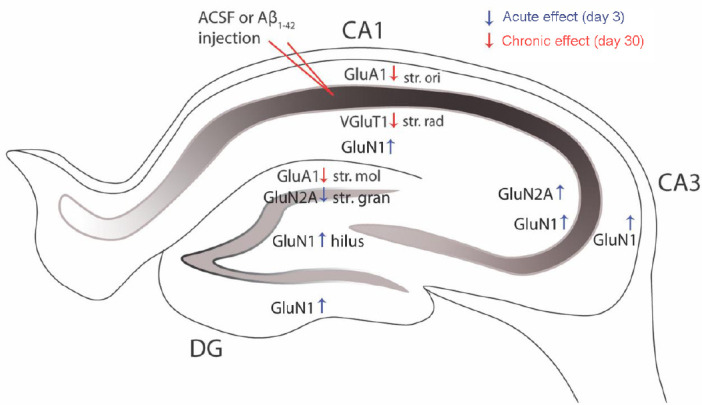Figure 1.

Aβ1–42-induced hippocampal glutamatergic receptor and transporter remodeling.
Aβ1–42 induces region- and layer-specific expression changes in the hippocampus of the glutamatergic receptor subunits GluA1, GluN1, GluN2A, and the transporter VGluT1, suggesting a complex and spatial vulnerability of this pathway during the development of AD neuropathology. The acute (blue arrows) and chronic (red arrows) expression changes induced by Aβ1–42 impact different glutamatergic signaling components. These glutamatergic receptor subunit and transporter expression changes have the ability to impair glutamate release, receptor activation and LTP leading to deficits in cognitive function and memory. Aβ: Amyloid-beta; ACSF: artificial cerebrospinal fluid: CA: cornu ammonis; DG: dentate gyrus; GluA1: glutamate α-amino-3-hydroxy-5-methyl-4- isoxazolepropionic acid (AMPA) receptor type subunit A1; GluN1: glutamate N-methyl-D-aspartate type subunit 1; GluN2A: glutamate N-methyl-D-aspartate type subunit 2A; str mol: startum moleculare; str. gran: stratum granulosum; str. ori: stratum oriens; str. rad: stratum radiatum; VGluT: vesicular glutamate transporter.
